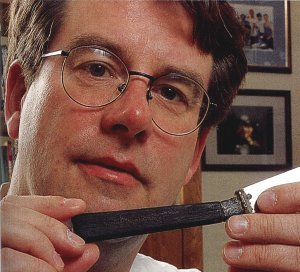Accessories
Here are some ideas on minor yet important details that get little consideration. These topics are especially important to gear-laden New Jersey divers; much less so to unencumbered warm water divers.
A light and a knife are the first two non-essential accessories that you should get. Actually, neither one is non-essential, and only a fool would dive around here without both. Goody bags are used to carry booty from the sea. This includes food, treasure, and a lot of rusty junk that you're going to pick up because it is there. They can also be used to carry tools down with you.
2016 Update
Knives and bags haven't changed much in twenty years, but lights sure have. That section has been re-written to reflect modern technology. Nothing else new here, except that solid brass snaps have gotten harder to find and a lot more expensive. So if you find one on the bottom, leave it there for me!

You might not think that color matters much, but I prefer light, bright colors for any accessory that I might drop or set down. This includes knives, lights, bags, weights, and many other things. Yellow is my favorite color for this.
Despite the fact that black is really the only cool color for tech divers, I prefer Coast Guard orange uppers on my drysuits. These make you easier to spot, whether in the murk of the quarry, or drifting away on the surface of the Atlantic.
DIR
All equipment must be black. Ha ha - just kidding. You guys can take a joke, right?
More: Gear Colors ...

now extinct
In the murky waters off New Jersey, you are going to need a powerful dive light if it is to be of any real usefulness. There are many different types of underwater lights to choose from.
Bulb Type
Nowadays, LEDs are the only way to go. They are cheap, bright, and efficient. They throw a white light that is much better than the dingy yellow of the old incandescent technology. Incandescent lights are completely obsolete. HID lights were never reliable, and terribly expensive.
Beam pattern is probably more important than brightness, Your main light should throw a wide beam, for area illumination. Many lights throw a narrow pencil beam that appears to be brighter but is actually less useful. These are best used as backups and in special situations, such as camera strobe aimers. Some lights are adjustable.
More: Dive Lights ...

A dive knife should also be considered standard equipment since many dive locations have hazardous monofilament in which you can become entangled. Don't skimp on your knife either - the most commonly found artifact off the New Jersey coast is the cheap dive knife that has slipped from its sheath. When looking at knives in the store, scrutinize the locking mechanism and the sheath. Is it secure and unlikely to release by itself, yet also easy to use? Will it loosen under use, or break with age? Tug at it, and try to see if you can work it loose without actually hitting the release. If you can, then don't buy it. Also, bigger is not necessarily better - many of the best knives on the market are only 10 inches long overall.
Some other features to look for in a knife are:
- Blade shape: blunt tipped blades are safer, while pointed blades are more useful if you are into underwater hunting.
- A good big sturdy handle: you will probably have thick gloves on.
- Metal-butted handle: useful as a tank banger, or light duty hammer.
- Saw edge: for heavy duty cutting.
- Quick release depth compensating straps: much better than buckles.
More: Dive Knives ...
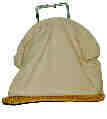
Goody bags come in several lengths and sizes, but three feet ( yellow mesh ) is by far the handiest and most popular size. Bigger bags are too much of an encumbrance, and if filled to capacity, say with mussels, become too heavy to safely carry underwater.
Goody bags come in a variety of materials. Open nylon mesh is the most common and drains instantly when you exit the water. It is also the best for dragging mussels behind the boat. Canvas is good for spearfishing, as it keeps the fish slime off you, yet still drains reasonably well. It can also have a calming effect on your prey, resulting in less thrashing about. Of course, with a canvas bag, it is more difficult to admire your catch during your hang at the end of the dive. Nylon cloth is used for small tool bags. It is the strongest of all, but drains very poorly. A large nylon bag full of water is a very heavy load to drag up a dive boat ladder.
More: Goody Bags ...
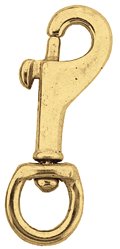

Diving in the North Atlantic requires a lot more accessory gear than diving in the tropics. This can include knife, spare knife, light, spare light, marker light, flag & line, slate, dive tables, goody bag, spear, spear gun, tickle stick, reel, lobster gauge, lift bags, camera and lights, hammer, and a whole lot more if you are into heavy-duty wrecking, although hopefully not all of it at the same time.
Except for the new pseudo-technical BCs, most BCs just don't have enough D-rings. One solution is to add a few stainless steel D-rings to your weight belt or harness. You can get these ready-made from your dive shop for a few dollars. The best kind are those that are welded onto a slide-buckle so that they stand out rigidly away from your body. D-rings that are not fixed like this will inevitably fold under, making them impossible to use ( or even find ) with thick gloves on. Remember, once you are in the water with your mask on, most of yourself will be out of sight, and you will have to work everything by touch.
More: D-Rings & Fasteners ...
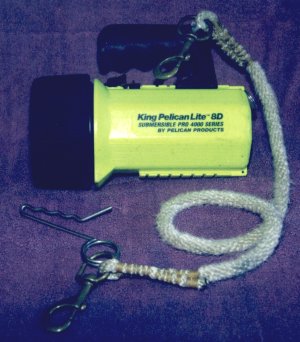
Chances are your light or other piece of gear came with a wrist lanyard. This item is probably ok for diving in the tropics where you shouldn't be doing anything with your hands anyway, but around here it is lousy. Wrist lanyards are a pain to put on and a pain to get off, and in the case of a light, if you let go of it to do something with both hands, it will invariably get in the way and bob around until it shines in your eyes and blinds you. When you finally get fed up with it, you will take it off, and in a careless moment, your equipment will be lost. Here is a much better rig, commonly known as a "hi-lo" lanyard:
Take the wrist lanyard off, and throw it away. Get two brass snaps and a piece of rope. Braided 1/2 " nylon is what I used because it is supple, won't rot, won't unravel, and doesn't float. Attach a brass snap to each end. You can just tie them on, or get fancy like me and make streamlined loops. The end-to-end length of mine is about four feet, including the snaps, but you can experiment. Attach the base ring of one of the brass snaps directly to your gear where the lanyard was.
More: Gear Lanyards ...
A Jon line is a cord used to secure yourself to the anchor line during your safety or decompression stops. This relieves you of having to hold on by hand, which can get tiring for long hangs in a strong current. You can also use a Jon line to get away from the crowd at 15 ft, while still being securely tethered to the boat.
There are a number of prefabricated Jon lines on the market that you can buy, along with several different gadgets to attach it to the anchor line, most of which are clever but not particularly reliable. For a few dollars, you can build a much better Jon line with parts from the hardware store. What you will need is:
- 6 ft of bungee cord - the kind with a fabric casing
- 2 brass snaps
- 6-8 wire ties
More: Jon Lines ...
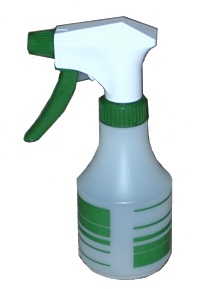
A small spray bottle of soap solution is an extremely useful item to have in your kit.
Much better than soap is baby shampoo. A solution of roughly 50% baby shampoo and 50% water is useful for many things:
- Lubricating dry suit seals
- Lubricating gloves and boots
- Finding leaks in suits, hoses, etc
- General cleaning-up
This is also the best mask defogger I have yet found - much better than anything you can buy, and it won't sting your eyes ( although it doesn't taste too good. )
More: Spray Soap ...
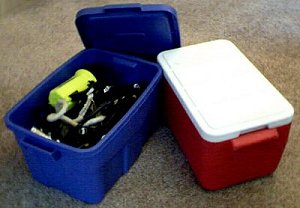
The standard means of moving and storing dive gear is the dive bag. All of the major manufacturers make dive gear bags. These are often quite fancy, with embroidered logos, pockets inside and out, "ergonomic" handles, and even wheels. Most of these bags are very nice but really too small to hold a cold-water dive kit, and very heavy to carry around when full. These bags are also expensive, a bother to clean, and a lot less waterproof than they claim. Here's is a convenient alternative that is much cheaper:
Go to K-Mart Home Depot and spend $5 on a Rubbermaid tote box, about the size of a milk crate. This will not be big enough to hold all items - you'll have to pack your fins and BC separately - but it will hold everything else, is small enough to fit almost anywhere, and also avoids making a single excessively heavy load. The tote also will not lose small items like a milk crate will. I eventually drilled drain holes in the bottom. I now use my fancy dive bag only to carry my drysuit and its accessories. This type of tote box is the preferred container on every area dive boat I have been on.
More: Gear Moving & Storage ...
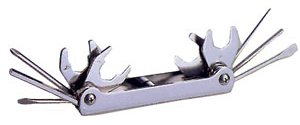
You should always bring along spare parts and some basic tools on every diving excursion. Dive shops all sell Save-a-Dive kits that are a good start on this. Here is a list of some things you might want to carry in your spares kit:
- o-rings for your tank valves and regs, and anything else that uses them
- wire ties, large and small, lots of 'em
- spare straps & buckles for mask, fins, snorkel, and knife
- spare regulator mouthpiece & wire tie
- a few feet of wreck reel line and surgical tubing
- duct tape ( squeeze a small roll flat to save space )
- silicone grease or O2 lube
- extra batteries and bulbs for all your lights, computers, and camera
- spare lanyards and brass snaps
- stainless steel dive tool with wrenches, allens, and screw drivers ( pictured above )
- stainless steel folding multi-tool with pliers, blades, and wire cutter
- glues and sealants - neoprene cement, AquaSeal, Crazy Glue
- bicycle tire patch kit - for small suit repairs
- soap, powder and wax for drysuit if necessary
- extra cam band - plastic buckles can break, especially in the cold
- extra car keys, cash, spare change, C-card, etc
More: Emergency Spares Kit ...
2016 Update
Well, computers, you can bet that everything has changed here.

There are a number of computer software packages available that allow you to simulate different dive profiles and create custom decompression tables without actually going in the water. Most of them have graphical interfaces, and allow you to vary not only the dive profile, but gas mixes, decompression mixes, decompression stops, algorithm, conservatism, and many other factors. Software like this is a staple in the technical diving field but is also useful to the recreational diver. Here are a couple, with links:
More: Dive Planning Software ...
- The Basics ...
- Exposure Suits ...
- BC & Weight System ...
- Tanks & Hardware ...
- Regulators ...
- Navigational Aids ...
- Accessories ...
More: Dive Gear ...

